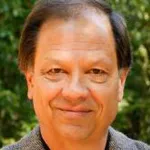
Inside Stanford Medicine - June 11th, 2010 - by Bruce Goldman
William Newsome, PhD, professor of neurobiology at the Stanford University School of Medicine, has received this year’s Champalimaud Vision Award for his groundbreaking research into the brain circuitry underlying the mysterious cognitive process that is vision and, ultimately, another equally mysterious process: decision making.
The size of the prize — $1.3 million — makes it the largest monetary award in the field of vision science and one of the largest scientific and humanitarian prizes in the world. Established by the Lisbon, Portugal-based Champalimaud Foundation in 2006, the Vision Award is conferred in odd-numbered years for practical accomplishments in preventing blindness, particularly in developing countries, and in even-numbered years for outstanding scientific research in the field of vision. Recipients are selected by juries of distinguished scientists and prominent public figures from around the world. Newsome shares the 2010 award with Anthony Movshon, PhD, of New York University.
Newsome learned of his Champalimaud award on June 2, after turning his cell phone back on when his weekly lab meeting ended. “There was a message from my wife telling me an ophthalmologist in Portugal had called and told her he was absolutely sure I would really, really want to call him back.” The ophthalmologist turned out to be a member of the Champalimaud jury panel: Alfred Summer, MD, dean of the School of Hygiene and Public Health and professor of ophthalmology, epidemiology and international health at Johns Hopkins University.
The foundation’s last research-based vision prize, in 2008, recognized research on the roughly 3 million nerve cells in the retina that turn electromagnetic radiation impinging on the retina (aka “light”) into electrical activity. This year’s award focuses on the next step: Newsome and Movshon were recognized for a body of work that stretches back three decades and chronicles the conversion of the firestorm of electrical activity generated in the retina into the reconstruction of images in the brain, then to making decisions and taking action. Working at times together and at other times separately, the two researchers mapped the bridges that span the gap between electrophysiology and psychology.
“Most people think vision happens in the eye,” said Newsome. “It doesn’t. The eye is really just a little camera that takes pictures that are processed lightly in the retina and passed along to the brain, in the form of electrical signals traveling along nerve tracts. It’s inside the brain — an organ totally sealed off, strictly speaking, from the outer world it apprehends — that real vision takes place. When you want to recognize your wife’s face or hit a moving baseball, all the computations that reconstruct these images take place in the brain. It’s your brain that creates your visual reality.”
In a joint 1989 study, Newsome and Movshon showed that neurons in a specific area of the brain are responsible for perceptual judgments about direction. Newsome further demonstrated that altering the activity of neurons in this area could improve or diminish perceptual performance.
Newsome said he and Movshon chose to focus on this brain area because its circuitry was fairly simple (at least relative to those involved in, say, face recognition) and had already been somewhat mapped out, and because detecting motion (and making quick decisions based on that detection) is of great importance to survival. “You can’t tackle the totality of cognition all at once. You have to narrow it down,” he said.
Newsome and Movshon were able to show that electrical activity in tiny clusters of a few dozen nerve cells apiece correlated with perception of a rightward vs. a leftward motion. By stimulating different brain areas with gentle currents, the two researchers could even change the perception of a very slight motion’s perceived direction, definitively establishing for the first time a causal relationship between these clusters’ electrical activity and the perception of directional motion.
Leonor Beliza, the foundation’s president, said: “Because of these two outstanding neuroscientists, we now have a fundamental appreciation for the role of neurons in how we see things move about in the world. Their groundbreaking work, takentogether and individually, has laid the basis for continued research on how the brain and its processes impact vision and perception.”
The cash windfall will enable Newsome to take a few steps back from his work to look at what he sees as the bigger picture. “Neuroscience is going to affect all of us,” he said. From economists studying how people make financial decisions to law professors debating the reliability of neurophysiological lie-detection methodologies to educators trying to figure out the best way to help kids overcome learning disabilities, connecting the dots that translate the firing of nerve cells into actual human behavior is a growth area with profound societal implications. “I want to redirect my efforts toward participating in that conversation.” That probably means a sabbatical is in the cards.
Newsome is also a member of the Bio-X program at Stanford and an investigator of the Howard Hughes Medical Institute. He was elected to membership in the National Academy of Sciences in 2002. Earlier this year, he won the Karl Spencer Lashley award from the American Philosophical Society.

